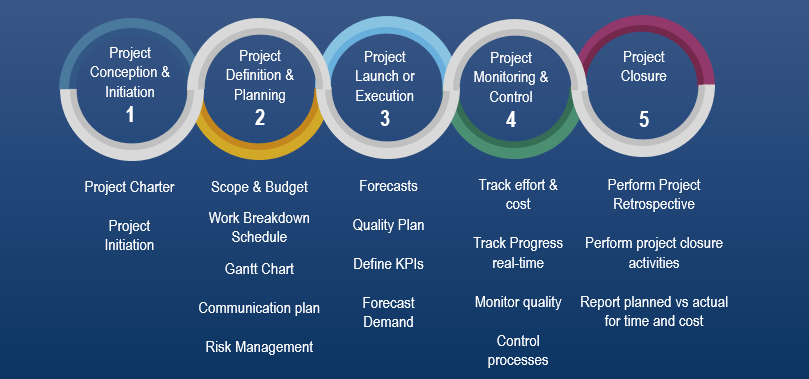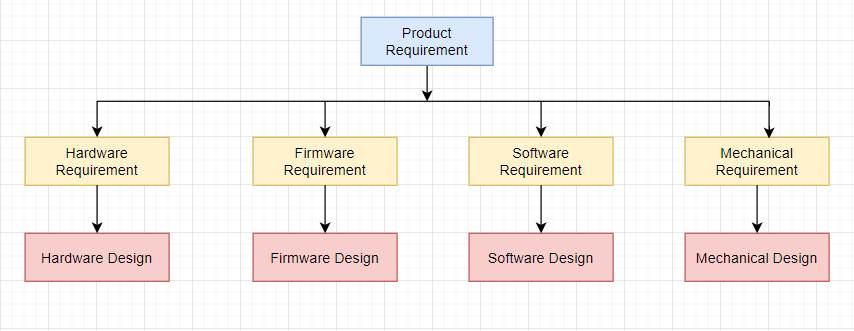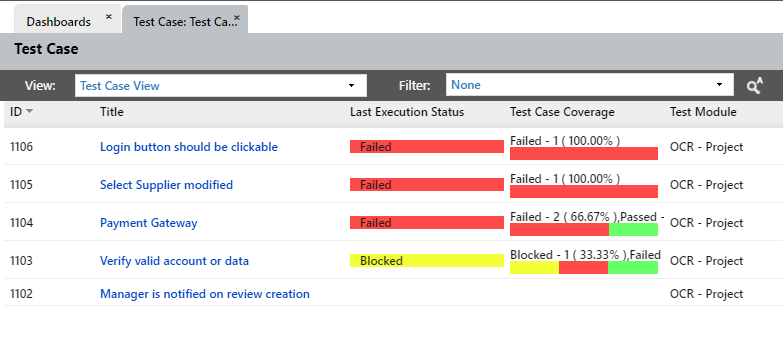The Solution
With the above-mentioned challenges in hand, the organization was looking for a SAAS based ALM & PPM solution which could cater to their problems. After evaluating multiple tools, they decided to select the Kovair ALM .
Kovair ALM , the fully integrated application lifecycle management product from Kovair is a browser-based solution. Kovair ALM along with its proprietary ESB, Kovair Omnibus provides a single platform for PMO success.
Hosted Solution
The organization was looking for a cost-effective solution over cloud to avoid any infrastructure related investment. Kovair has hosted the entire solution on Kovair cloud. These are getting accessed by users of the company from different geographical locations.
Project Initiation & Planning
Kovair PPM is a one stop solution that delivers greater value to the organization by connecting project planning to execution. Using Kovair PPM, organizations can define strategic initiatives to portfolio to projects to their outcomes. It allows to define strategic initiatives, choose the relevant projects for execution, provide deeper insights into development, projects and programs by generating EVMs at all levels, providing valuable inputs to the management, enabling them in making data-oriented decisions.
The organization maintained their pre-project phase in Kovair ALM where every request for a new product, project or POC gets registered. These requests go through multiple level of approvals configured through Kovair’ s task-based workflow. Once a request gets approved, a project gets created using the standard project template of the organization. (example?)

Fig.1
Once a project gets created, project managers can manage all phases of project management in Kovair. Using the capability of Task Scheduler, they are doing the planning. Task scheduler of Kovair ALM allows Project Managers to do the planning with precision by providing capabilities mentioned below.
- Supports creation of plan incrementally
- Provides Gantt Chart allowing managers to track the critical path for a project
- Allows to track milestones
- Considers company and individual leaves of resources
- Supports creation of tasks for activity owners as and when the plan gets published
- Provides complete transparency to project managers on project progress
- Allows project managers to compare planned vs actual in the plan in a real-time manner

Fig.2
With all the above-mentioned capabilities, project managers of the organization now have much better control on the project progress and users also have better visibility to their to do list of tasks.
Requirements and Design Management
Projects in the organization starts with Product Requirements. Each of these product requirements is categorized into multiple sub-requirements, viz. Hardware, Firmware, Software and Mechanical Requirements. All these requirements are then streamlined into their respective designs viz. Hardware, Firmware, Software and Mechanical Designs.
Kovair ALM allowed the organization to import all Requirements from their existing word documents and establish relationships between these Requirements and their corresponding Designs.

Fig.3
Requirements Management module of Kovair ALM provided them some inherent benefits as mentioned below.
- Allows easy capturing of Requirements from documents using Word Import
- Facilitates maintaining different types of Requirements through entity management framework
- Supports separate attributes and relations for each type of Requirement
- Allows to enforce centralized governance through automated task-based workflow for tracking a requirement lifecycle from analysis to delivery
- Supports tracking of who, when and what of changes for audit trail
- Supports versioning of Requirements with facilities of comparing and merging versions
- Custom template
Development Management through Connectivity with SVN
The organization is using the integration with their source control management tool SVN. Whenever a File is checked in SVN the related changeset and SVN file automatically gets synchronized to Kovair ALM. Once synchronized, these changesets gets linked to the Requirements or Defects against which the code was checked in.
Kovair comes with a SOA architected proprietary ESB platform Kovair Omnibus enabling organizations to setup an integrated ecosystem of tools without replacing the existing tools.
Other than SVN Kovair also provides integration with multiple tools as per the diagram below.
Test & Defect Management
The organization maintains Test Cases for each type of Requirements. They capture and manage all their System, Unitand Module Test Cases as well as the mechanical inspection data. The organization was earlier managing their test cases in excel files along with the traceability with requirements. This was leading to lot of errors and missing test cases. Test coverage of requirements was also not visible to different stakeholders leaving behind lot of untested requirements. With the implementation of Kovair Integrated Test Management solution, they now have a complete visibility to all the test activities that are getting performed against the requirements. They can maintain their Test Plans containing both entry and exit criteria. On failure of every test execution a defect gets logged in Kovair. There is a complete visibility to the testing activities along with the end to end traceability from Requirements to Defects.
Some of the inherent capabilities of Test & Defect Management by Kovair ALM are:
- Provides single platform for your testing needs
- Test Management
- Test Execution
- Test Automation through integration -with what?
- Task Based Workflow to manage your test activities
- End to end traceability with Requirements and Defects

Fig.4

Fig.5
Reports and Dashboards
Kovair ALM provides built-in graphical and textual reports in Word, Excel, PDF formats and dashboards with real-time drilldown data access. It allows users to configure KPIs as per organizational need and give access to different users based on their roles and responsibilities. Kovair ALM allows users to generate pre-formatted word documents like SRS/SDD/PRD/MRD from the application.
Using all the benefits as mentioned above, the managers and senior management of the organization has got complete visibility to the progress of the Project. This real-time data has also helped the organization in the areas of early detection of errors and improve production quality.
The Business Benefits Achieved
The organization has acknowledged that they are saving both time, cost and getting better quality with the implementation of Kovair ALM . Some of the major areas of benefit are listed below.
Robust Requirements Management
Kovair ALM has given the Project teams what it mostly needed – an improved and uniform process for requirements and test management. It has drastically simplified the management and tracking of various types of requirements, designs, prototypes, tests and test reports.
End to End Traceability
With the implementation of Kovair ALM , the organization achieved end to end traceability between the artifacts from Requirement to Designs to Test to Defect. which was exceedingly hard to achieve manually. Using this traceability, the project managers get accurate data on coverage of various items and provide real-time status updates on the project proceedings. They are now equipped to provide fast responses to questions like
- Which test objects are related to which requirements?
- Which change requests are impacting which requirements and test results?
- What are the different Designs that are related to the Requirements?
Enhanced Collaboration
Using the unified platform of Kovair ALM , collaboration between the project teams became easier. Capabilities like Document View is providing users a detailed information about the requirements, tests, designs, etc. while using the Traceability View, users can view the entire chain of linked artifacts that are related to one another and clearly track the coverage and progress of the mission.
The real-time information from Kovair over a web-based interface along with email notifications, facilitates the acceleration of work processes that has resulted in significant improvement in the communication and collaboration among the different team members.















